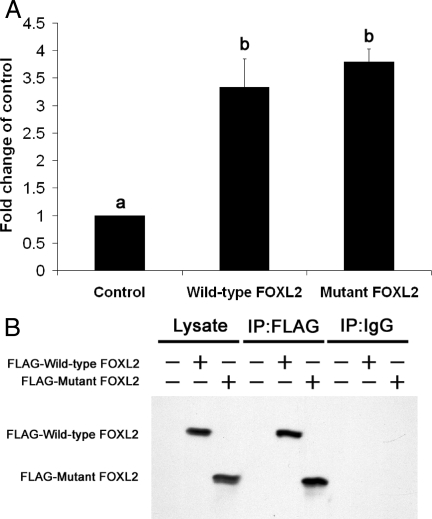Fig. 7.
ChIP suggests binding of FOXL2 to the human CYP19 promoter. KGN cells were transiently transfected with empty expression construct (control) or expression constructs for FLAG-tagged wild-type or mutant FOXL2. FLAG-tagged wild-type and mutant FOXL2 were then immunoprecipitated using the anti-FLAG M2 antibody. A, The amount of DNA cross-linked with FLAG-tagged wild-type or mutant FOXL2 was then measured by quantitative real-time PCR with primers corresponding to the −113- to +8-bp region of the human ovarian-specific CYP19 promoter. The results shown represent the averages of three independent experiments. The Ct counts for IP with IgG and M2 FLAG antibodies were first normalized against the Ct counts for 1% input, to give the percentage of total input. The percentages of total input from IP using the M2 FLAG antibody were then divided by the percentages of total input from IP using the IgG antibody. The results from ChIP with cells transfected with wild-type FOXL2 and mutant FOXL2 were further normalized against the results from ChIP with cells transfected with empty pFLAG-CMV-2 vector (control). Significant differences (P < 0.05) between samples are denoted by a or b. B, The levels of expression and IP of FLAG-tagged wild-type and mutant FOXL2 were confirmed by Western blotting.

